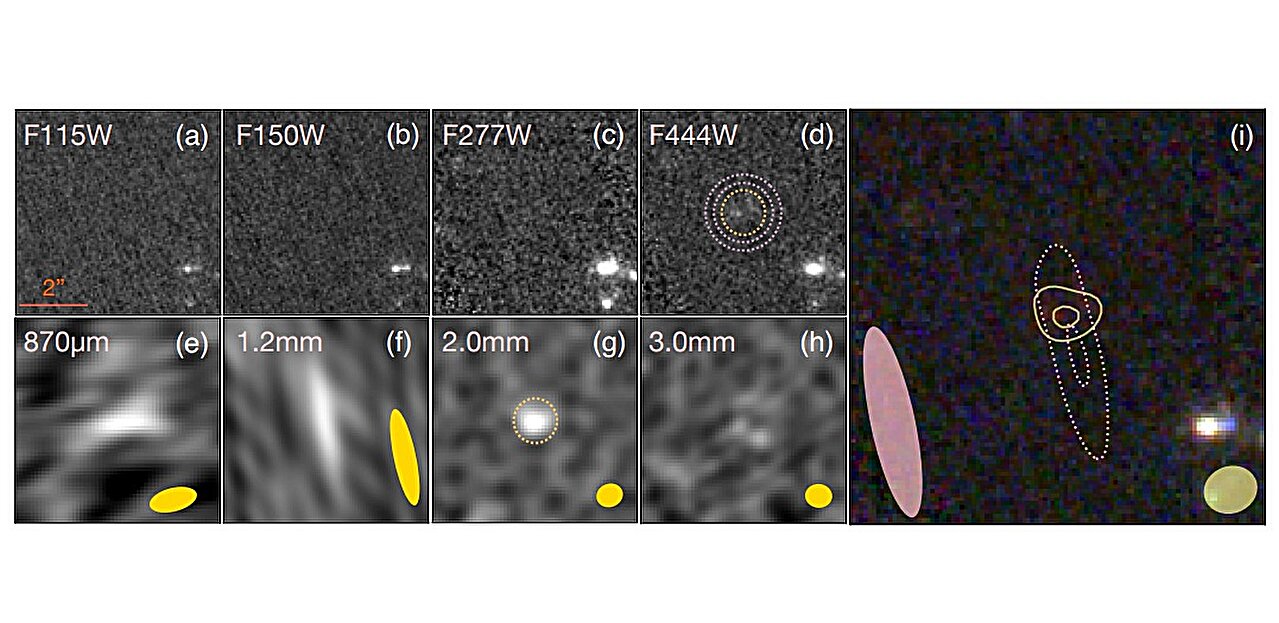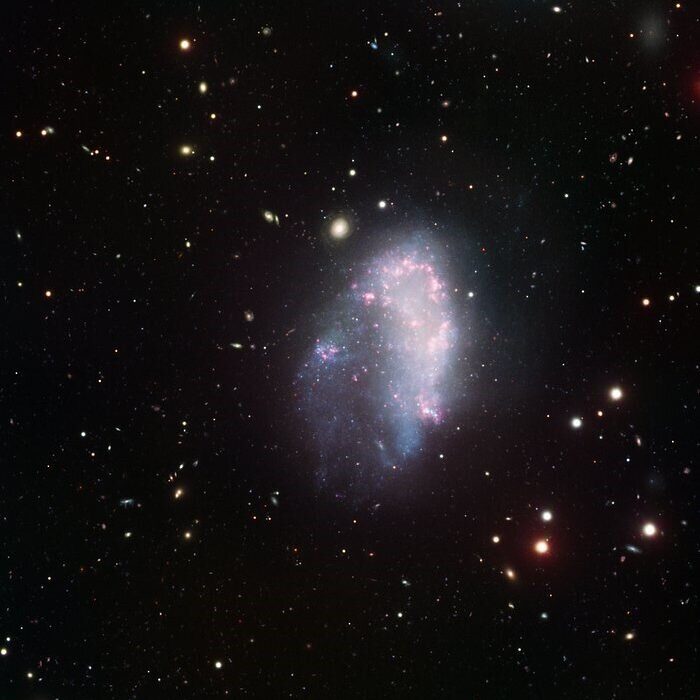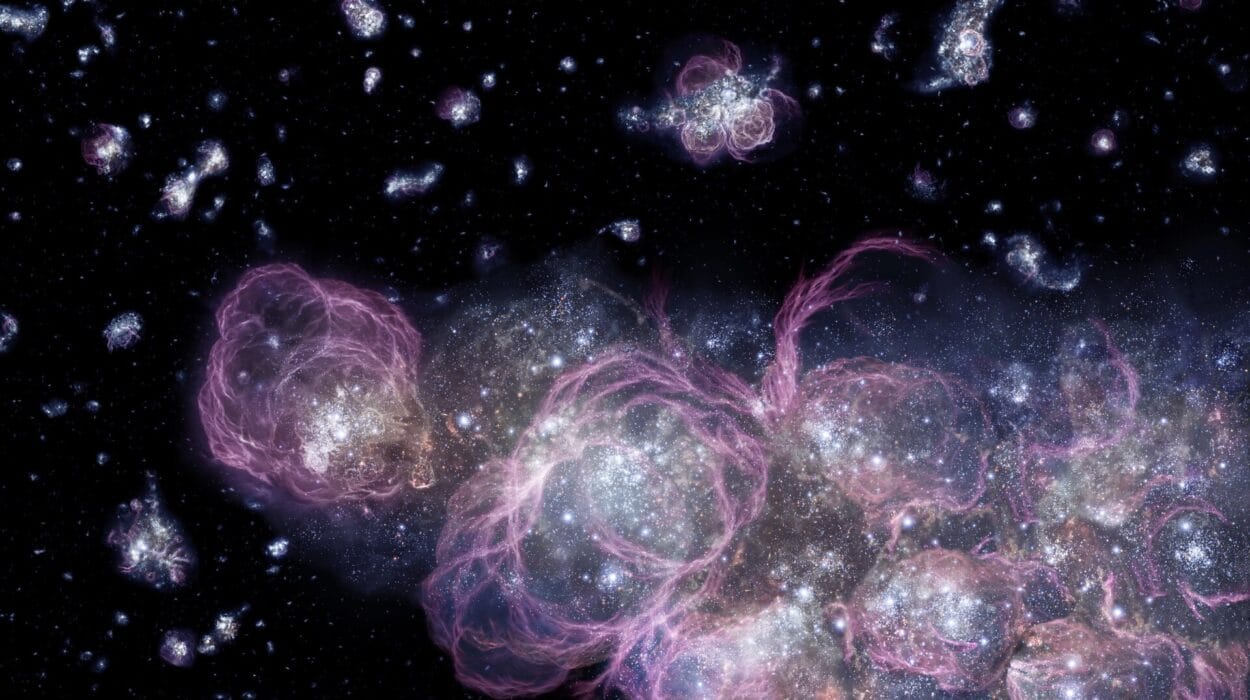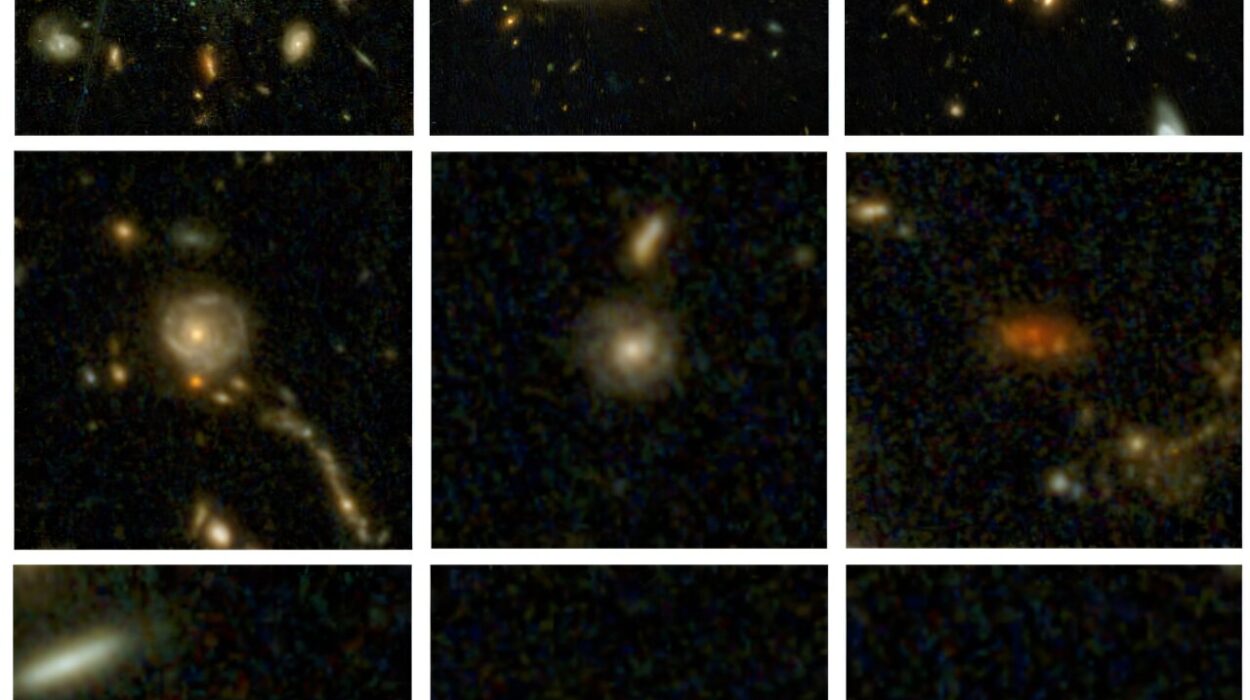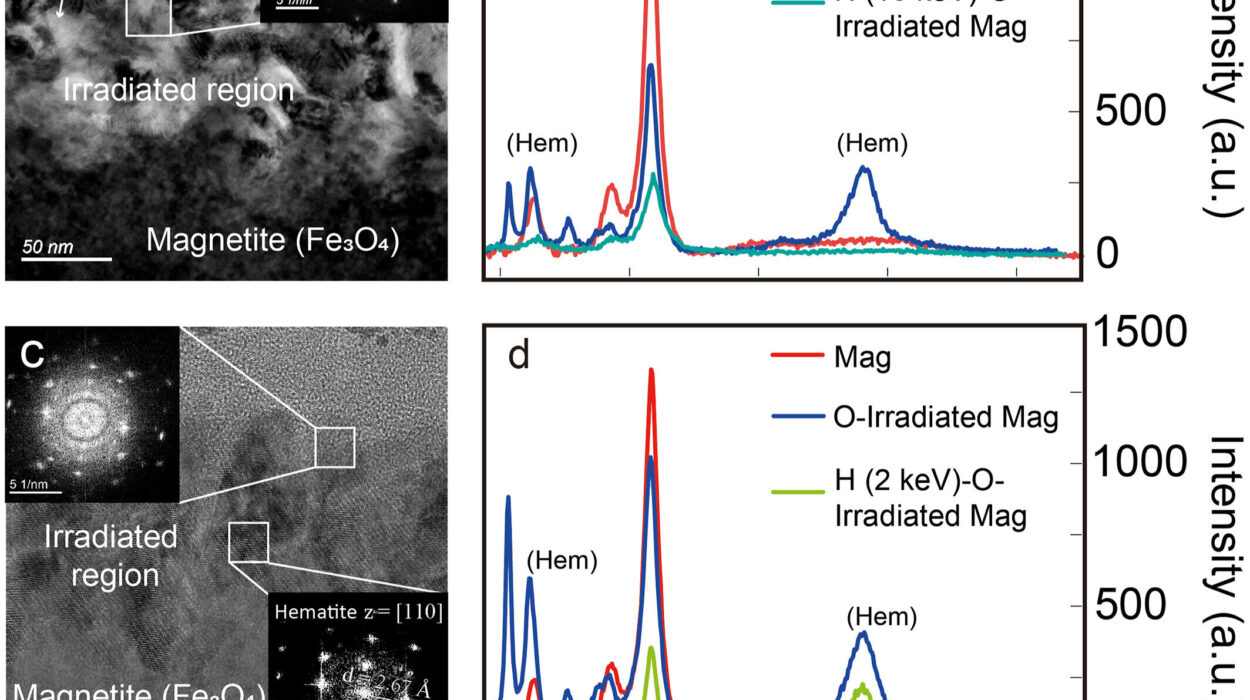It was a stroke of luck that led a team of astronomers to uncover one of the universe’s best-kept secrets. Hidden behind a thick curtain of dust, far away in the deep reaches of space, a new galaxy was waiting to be discovered—a galaxy busy creating stars at an astonishing rate. The newly discovered galaxy, named AC-2168, is a dusty star-forming galaxy (DSFG) located about 13 billion years in the past. This discovery, which pushes the boundaries of our knowledge of galaxy formation, was made by a team led by Longji Bing from the University of Sussex, UK.
What makes this galaxy especially intriguing is not just its age but the extreme conditions under which it’s forming stars. Imagine a galaxy packed with the raw materials to create stars, yet shrouded in thick dust, hiding its true nature from view. In the early universe, such galaxies were the powerhouses of stellar creation, and AC-2168 offers a rare glimpse into this chaotic, star-birthing process.
A Lucky Discovery in the COSMOS
The discovery was the result of a careful, but ultimately serendipitous, inspection of a patch of sky in the Cosmic Evolution Survey (COSMOS) field—a well-known patch of the universe studied by astronomers for clues to galaxy evolution. The team had been focusing their observations with the Atacama Large Millimeter/submillimeter Array (ALMA), an advanced telescope array located in the high-altitude desert of Chile. What they did not expect was to stumble upon AC-2168, an extraordinarily dusty galaxy, teeming with new stars, at an incredibly high redshift of 6.63. This high redshift means that the galaxy was formed just 1 billion years after the Big Bang, making it one of the earliest such discoveries.
“We report the discovery of AC-2168, a NIRCam-dark, millimeter-bright galaxy at zspec = 6.631 serendipitously detected in ALMA 2mm continuum and spectroscopically confirmed with NOEMA 1.2mm, ALMA 2mm and ALMA 3mm observations,” the researchers explained in their paper.
In simple terms, AC-2168 was detected as a bright spot in the millimeter wavelengths, the kind of radiation emitted by dust in the process of star formation. The discovery was further confirmed with follow-up observations using NOEMA, another radio telescope array. What the team found was a galaxy in the midst of rapid star formation, but one that would have been nearly invisible to more conventional observations due to its dust cloak.
Unveiling the Mystery of AC-2168
So, what does this new galaxy look like, and what makes it unique among the many other dusty star-forming galaxies we’ve found in the early universe?
For one thing, AC-2168 is far from the most extreme example of star formation in the universe. While some DSFGs form stars at rates as high as 1,000 times the mass of the sun each year, AC-2168 is a bit quieter, with a star-formation rate of 240 solar masses per year. This is still an impressive number, but it places AC-2168 in a category that allows for a deeper investigation into the dynamics of star formation and galaxy evolution.
Despite its somewhat more subdued star-forming activity, AC-2168 is still a massive galaxy. Its stellar mass weighs in at about 37 billion solar masses—still a giant in the universe. But it’s the galaxy’s dust that tells the real story. AC-2168’s dust is exceptionally warm, with a temperature of about 60,000 K, making it a prime candidate for study in the hope of unraveling the ways galaxies evolve during their early years.
Its compact nature, along with a gas fraction of 52%, suggests that this galaxy was rapidly gathering mass in a concentrated form, potentially setting the stage for future generations of galaxies. It’s also worth noting that AC-2168’s gas depletion time—the amount of time it will take for the galaxy to run out of its available gas for new star formation—is relatively short at just 170 million years. This rapid consumption of gas hints at a galaxy in overdrive, making the most of the raw materials it has before the well runs dry.
Another fascinating detail? Despite the astronomers’ best efforts, they found no clear evidence of certain types of galaxies that are typically associated with star formation, such as Lyman-alpha emitters or Lyman-break galaxies. This absence of typical markers adds an extra layer of mystery, suggesting that AC-2168 could be operating in a completely different environment from the more familiar, well-known star-forming galaxies of its time.
Why AC-2168 Matters
The discovery of AC-2168 is a breakthrough for several reasons. First and foremost, it offers a rare look at how galaxies formed and evolved just a few hundred million years after the Big Bang. During this period, the universe was still in its adolescence, and galaxies like AC-2168 were in the midst of an intense period of star formation. By studying such galaxies, astronomers can piece together the puzzle of how galaxies went from being small, fragmented clumps of gas and dust to the massive systems we see today.
What makes AC-2168 particularly interesting is that it represents a relatively common type of galaxy—dusty star-forming galaxies—that we still don’t fully understand. The galaxy is a perfect example of how some of the most intense starburst galaxies are still hidden behind layers of dust, making them challenging to study. The more we understand about these galaxies, the better we can grasp the true processes of galaxy formation and the mechanisms that drive their evolution.
Perhaps even more intriguing, AC-2168’s discovery challenges some of the assumptions astronomers have had about the environments in which these early galaxies formed. Without the telltale signs of Lyman-alpha emitters or Lyman-break galaxies, this new galaxy hints at a more complex and diverse environment than previously thought, where massive galaxies could emerge under unique conditions.
In a broader sense, this discovery has the potential to reshape how we think about galaxy formation in the early universe. As astronomers continue to probe the cosmos for similar galaxies, the insights gleaned from AC-2168 could unlock the mysteries of how galaxies and stars came to be in the first place—and ultimately, how the universe as we know it came into existence.
AC-2168 is more than just another distant galaxy. It’s a window into the past, showing us how the universe was starting to come alive, not with just any galaxies, but with the first-generation galaxies that would eventually grow up to form the spectacular systems we observe today. And with each new discovery like this, we come closer to answering one of the biggest questions in science: how did we get here?
More information: Longji Bing et al, An almost NIRCam-dark dusty star-forming galaxy at z=6.63, arXiv (2025). DOI: 10.48550/arxiv.2511.08672
